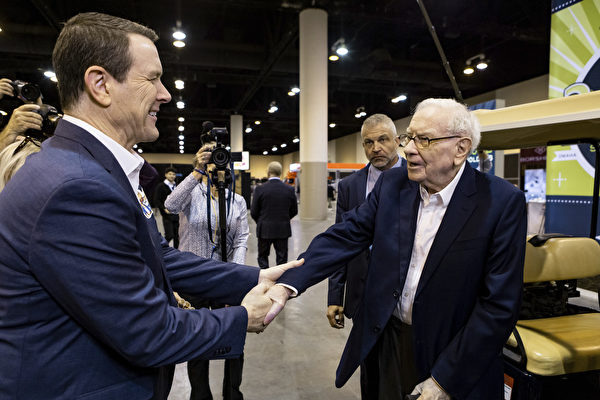In today’s modern Internet era filled with dynamic visuals, videos, and vibrant designs, most websites have embraced a contemporary look. However, Berkshire Hathaway’s website remains steadfastly stuck in the simplicity of the 1990s. Why is this the case?
Warren Buffett, one of the wealthiest individuals globally with a net worth of $144 billion, heads the Berkshire Hathaway conglomerate valued at around $1 trillion. The company stands as the seventh-largest publicly traded company in the United States, boasting annual revenues surpassing $350 billion and employing approximately 400,000 individuals.
Despite its financial stature, Berkshire’s website fails to reflect this grandeur, appearing more like a relic from the early days of the internet. The homepage consists merely of a series of plain white background webpage links.
Berkshire’s official website displays the company’s name and address, a text advertisement for Geico auto insurance, suggestions for submitting feedback to headquarters via postal mail, along with a disclaimer about the limited employee capacity to respond.
Frankly speaking, the website resembles something a teenager pieced together in the 1990s and then never revisited. However, the site does update its earnings reports every three months, and Buffett occasionally adds new links on the homepage, such as clarifications regarding Berkshire’s 2021 investment in Activision Blizzard.
Why has Buffett, who greatly values Berkshire’s public image and reputation, never updated the company’s outdated website? It serves as a symbolic reflection of Berkshire’s culture—a testament to Buffett’s values of simplicity, efficiency, and frugality.
The 94-year-old Buffett is renowned for his reluctance to waste his or shareholders’ money. During his commute, this billionaire often stops at McDonald’s for breakfast, has maintained a salary of $100,000 annually for over 40 years without bonuses or stock incentives, and still resides in the same house he purchased in the 1950s.
Berkshire is a vast conglomerate encompassing entities like Geico, See’s Candies, Fruit of the Loom, and BNSF Railway. Buffett and a few dozen individuals at the Omaha headquarters oversee dozens of subsidiaries under Berkshire.
Chris Bloomstran, President of Semper Augustus Investments and a longstanding Berkshire shareholder, believes that the Berkshire website “provides investors with everything they need on a simple login page.”
He finds the site easy to navigate and appreciates the ability to access decades worth of financial reports, shareholder letters, press releases, and subsidiary website links all in one place.
Darren Pollock, Investment Manager at Cheviot Value Management and another seasoned Berkshire shareholder, states that Berkshire shareholders “do not require flashy websites or photos of Warren eating See’s Candies at his Fruit of the Loom company.”
Pollock notes that the website mirrors Buffett’s view of shareholders—emphasizing substance over style and a focus on content rather than aesthetics. Shareholders, in his opinion, value managers who meticulously account for every penny spent, rather than lavishly investing in website upgrades.
“Focused on investors, Berkshire’s website is efficient and user-friendly, showcasing how Warren Buffett keeps costs low at Berkshire. His Nebraska car license plate used to (and possibly still does) read ‘Thrifty’,” remarks David Kass, a finance professor at the University of Maryland.

